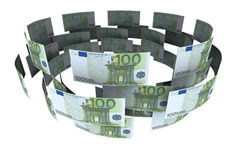
The euro remains pinned near the seven-month low it recorded two days ago near $1.0850. It approached $1.0950 yesterday and has been confined to about a 15-tick range on either side of $1.0905 today. Against the yen, the dollar remains near the three-month high (~JPY104.85) also seen two days ago. New dollar buying emerged yesterday near JPY104. Â
The driving force is the continued climb in interest rates. The US 10-year yield pushing through 1.80% and is at its highest level since early June. It has moved above its 200-day moving average (~1.72%) recently for the first time since the very start of the year.  Â
The rise in yields is not just a US phenomenon. The 10-year German bund yield closed above its 200-day moving average (8 bp)yesterday, for the first time this year and the 10-year yield is up another handful of basis points. The 0.14% yield is the highest in four months. Today may be the first day since early-January that the yield on the UK’s 10-year gilt will close above its 200-day moving average (1.16%). The 10-year JGB yield has been flirting with its 200-day moving average (-6.5 bp) since early-September. Yields are broadly steady between minus 10 bp and zero. Â
Despite the backing up of rates, the market remains convinced that the ECB will extend its asset purchases. Most of the increased price pressures in the eurozone likely reflect the recovery in oil prices. The flattish core rate below 1% reflects this. In addition, the recovery in lending seems to stall at a subdued pace. Lending to non-financial companies grew 1.9% year-over-year in September, unchanged from August. Similarly, lending to households remained stuck at 1.8%.M3 growth itself slowed to 5.0% from 5.1%
While the ECB is widely expected to announce its changes at the December meeting, the BOJ’s Kuroda all but said not to expect from action next week. Kuroda indicated that it might not need to buy JPY80 trillion a year to keep the 10-year bond yield near the zero target. Separately, local press reports continue to play up the likelihood that the BOJ pushes out again when its inflation target will be reached at FY2018. It seems rather than a date-specific guidance, the BOJ (and investors) would be better served by keeping it vague like the US “medium term”or the UK’s rolling two-year framework. The ECB talks about achieving its target as quickly as possible. The BOJ keeps finding itself in a position where to maintain its credibility it is stretching it needlessly. Â

